What would you do for a BMW?
I was never a high-end car person. I grew up driving around in a Datsun pickup (my grandfather owned a dealership), and later inherited that same vehicle, rust holes and all, from my parents. Through my college years I had the odd beat-up vehicle, and later had one of those box-like cars to keep me and all my gear moving through the backcountry. Motorcycles were the same as cars for me: I went with the best bike that fit into my small budget. At least I did until my wife and I decided to ride motorcycles to South America.
My wife is a prudent person. A stable job, steady income, mortgage, savings accounts and a sane husband… (maybe). It should come as no surprise that when I mentioned we should ride motorcycles to South America, I almost fell over when she said “Yes.” Her agreement came with one stipulation: She wanted a BMW bike. Her exact words were, “I drive a BMW car, and I want a BMW bike.”
Motivated to get on this before she changed her mind, I started searching for what kind of BMW bikes we should use for the expedition to South America. I wanted something light enough that she could pick it up on her own in case I was incapacitated, but also something that would allow us to go off the beaten path and still be comfortable. I decided the G 650 GS checked all these boxes. My internet searches led me to the Sertão (insert “Ahh” like music), and it was everything I knew we wanted: off-road capability, newer than the Dakar (so hopefully lower mileage options available), fuel injected for the high altitudes we would experience in the Andes, and of course BMW’s legendary comfort. I showed my wife, and she even liked the white and blue colours that mark the Sertão (are we realizing her priorities here?). I thought to myself this trip might actually happen!
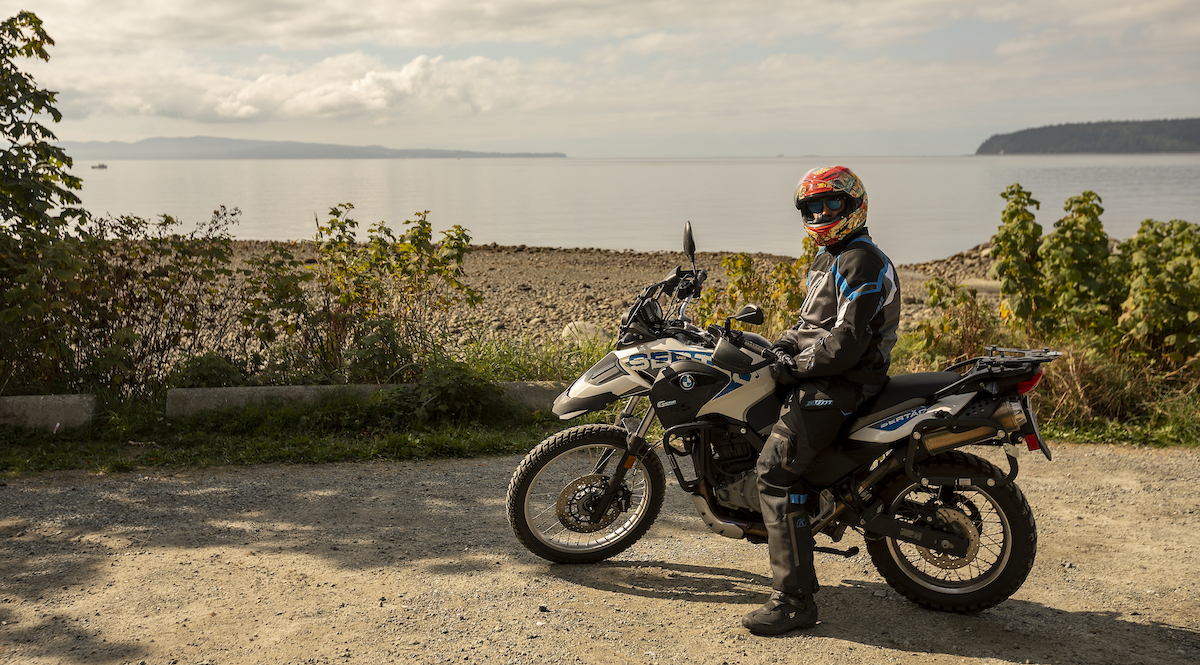
I commenced daily internet searches for Sertãos available in British Columbia. I found one about as well-cared for as my first Datsun pickup. There were a few in the USA but getting them across the border to Canada would cost more than half the cost of the bike. That led me to a few higher milage models in Quebec—over 4,500 kilometers (2,800 miles) away. Feeling a little disheartened, I continued the daily grind of searching while wondering if maybe the Sertão wasn’t meant to be after all.
After several months, a 2012 Sertão with only 8,000 kms (5,000 miles) and equipped with a bunch of accessories came up in Regina, Saskatchewan. (Fun fact: Regina is the birthplace of Wade Wilson, AKA Deadpool). Being only 2,000 kms away (1,250 miles), I thought this could be the one. After a phone call, a video chat to see the bike and a small amount of negotiation, one week later I was on a plane to pick up our first Sertão.
Due to COVID-19 travel restrictions in Canada, it was my first flight in almost two years. It was strange to be in an airport, and surprising how busy the airport was. Canadians were obviously taking advantage of cross-province travel in Canada this summer. Since I have always had issues with people standing very close to me in line-ups—I like my space, hence I ride a motorcycle—the new regulations for spacing protocols were a blessing to me as I waited in line after line to board my flight.
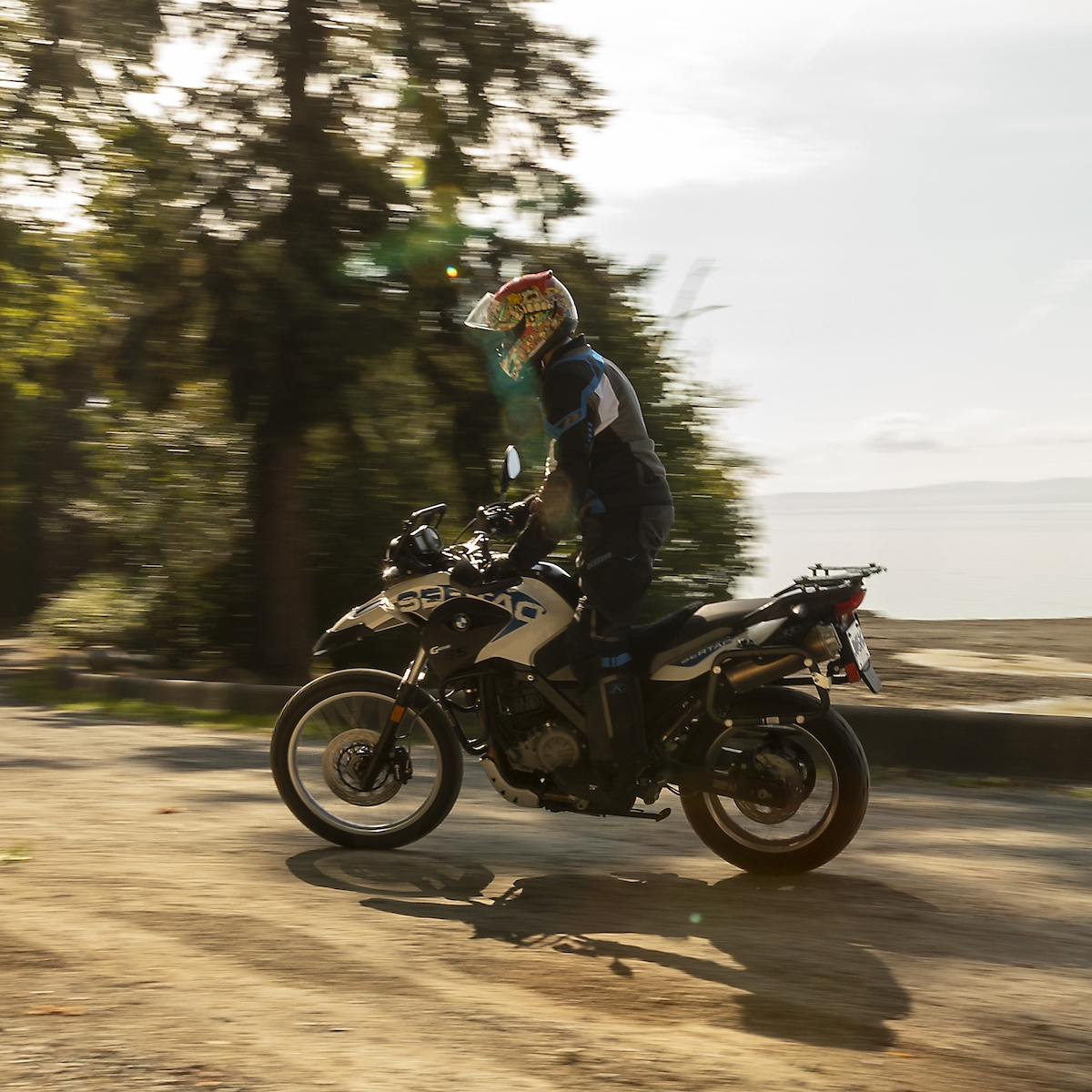
Three hours later, I had the bike paid for, registered in my name and completed insurance documents. I sat there staring at my new-to-me beauty sitting in a random strip mall parking lot, glowing in the late afternoon prairie sunlight. The bike was immaculate and ready to ride. After a quick meal, I decided to get a head start on the 2,000-kilometer trip home.
For those of you whom have not visited central North America I have one word to describe the area: flat! Over the next 24 hours I travelled nearly 800 kms (500 miles) of straight road. I passed field after field with the odd shower to bring me back to consciousness. The riding wasn’t difficult; the boredom was the real challenge. You often hear riders talk about the freedom of riding a motorcycle coming from how focused you need to be; the focus forces you to leave your worries at home. Get ready to reanalyze every poor decision you ever made.
I finally reached the Rocky Mountains, the landscape I needed to really get a feel for the Sertão. Barrowing through the canyons walling in the Trans-Canada Highway, I tested the power and handling of my new bike. The thumper pushed me through corners at high speed, and gave me the extra power I needed to move by larger trucks blocking the highway in heavy traffic. The wind tore through my helmet and I felt a rush as each mountain pass opened into fantastic scenery, only to be replaced by another amazing pass less than a kilometre down the road. I felt transported to an eerie world by the trees of rich green lining the mountain passes, drop-offs of several hundred metres falling into the abyss along the side of the road and a misty fog at the mountain peaks. The previous day’s ride had felt like a month, but two hours of riding in the Rockies felt like two minutes.
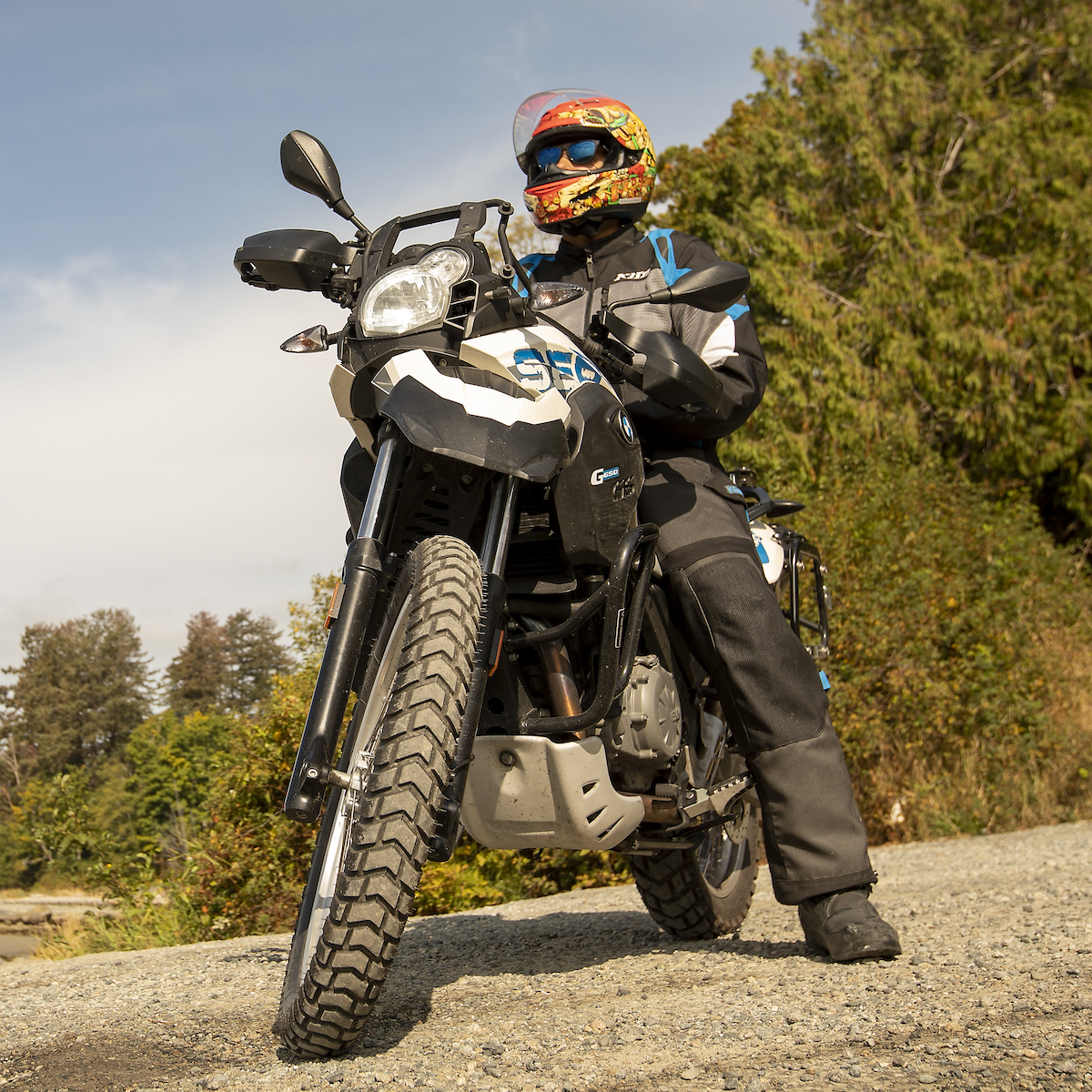
With the late afternoon sunlight breaking through the fog, I arrived at the small town of Golden, British Columbia. Nestled in the Rocky Mountains, Golden is famous for being surrounded by high mountain peaks, fast flowing rivers and one of the best motorcycle rides in British Columbia. That ride would have to wait for the following day, as after 10 hours of riding, I needed a shower and a meal. My father decided to meet me in Golden on his motorcycle to share a four-hour section of the next day’s trip with me. Once at the hotel we had a simple meal and then I passed out.
The next morning took us through the infamous Roger’s Pass. Discovered in the late 1800s, Roger’s Pass connected the west coast of Canada to the rest of the country by rail. In the early 1900s a road was built to connect the same route. The road hugs the mountains while twisting and turning around each bend. Several snowsheds are built above the road to prevent avalanches from blocking the road in the winter (although avalanches blocking the road are still a regular occurrence) and these cement structures add to the surreal effect of being lost in the high pass. Interestingly enough, my great-grandfather brought his family to Canada from India when he was hired as an engineer to work on the road through Roger’s Pass in the 1920s. A few times as I gave the bike throttle coming out of the bends, I wondered if my great-grandfather ever imagined one of his family members would be tearing through the pass at such high speeds.
After completing Roger’s Pass, the rest of the trip to the interior of British Columbia was uneventful. I said good-bye to my father and rode to the Pacific Coast. Taking the Coquihalla Highway, I had an opportunity to see firsthand the devastation caused by this year’s forest fires. A fire had recently blazed through the area and destroyed over 100 hectares (about 250 acres) of land. It was like riding through a zombie apocalypse movie, with both sides of the highway giving off a black, grey and orange glow. The ground was a crisp white/grey, showing how nothing in the fire’s way could have survived. I moved though the scorched earth a bit slower than I normally would ride; I was fascinated looking through the brunt trees while questioning if these fires would ever slow down, or if they would just continue at this rate until beautiful British Columbia was no more.
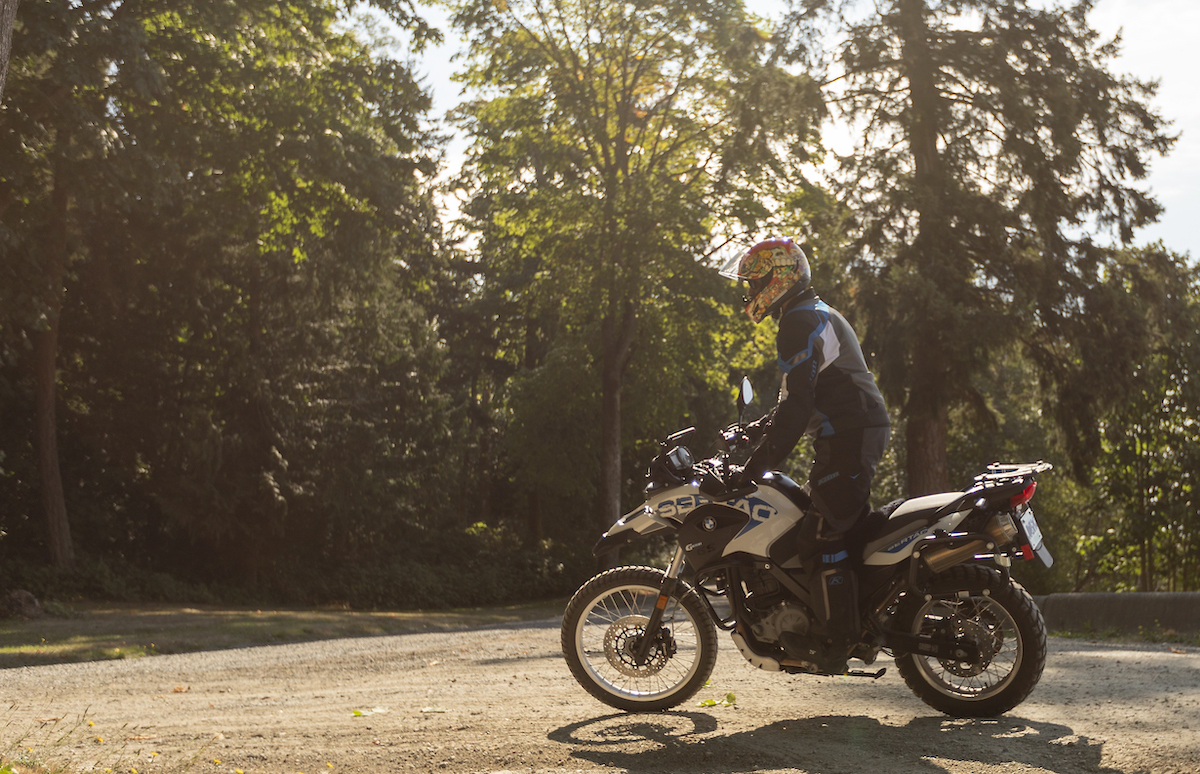
Five hundred kilometres (300 miles) later, I made it home. My wife helped me unpack the panniers and asked me if it was worth riding 2,000 kms in three days to pick up the bike. I took a moment to think about it and decided yes, it certainly was. This trip allowed me to test out the Sertão in all types of riding environments. I ran it at high speeds on the prairie flats, ripped through Rocky Mountain passes, drove through busy Vancouver streets in high temperatures, and even tried a little off-roading. The Sertão handled great everywhere, and it passed the test to ensure it was the right bike for our South America expedition. Plus, now I own a BMW motorcycle!
The real question now is: Would I do it again for a BMW? I have to, as my wife is waiting for her Sertão and the only one available in Canada is over 2,700 km (1,700 miles) away.
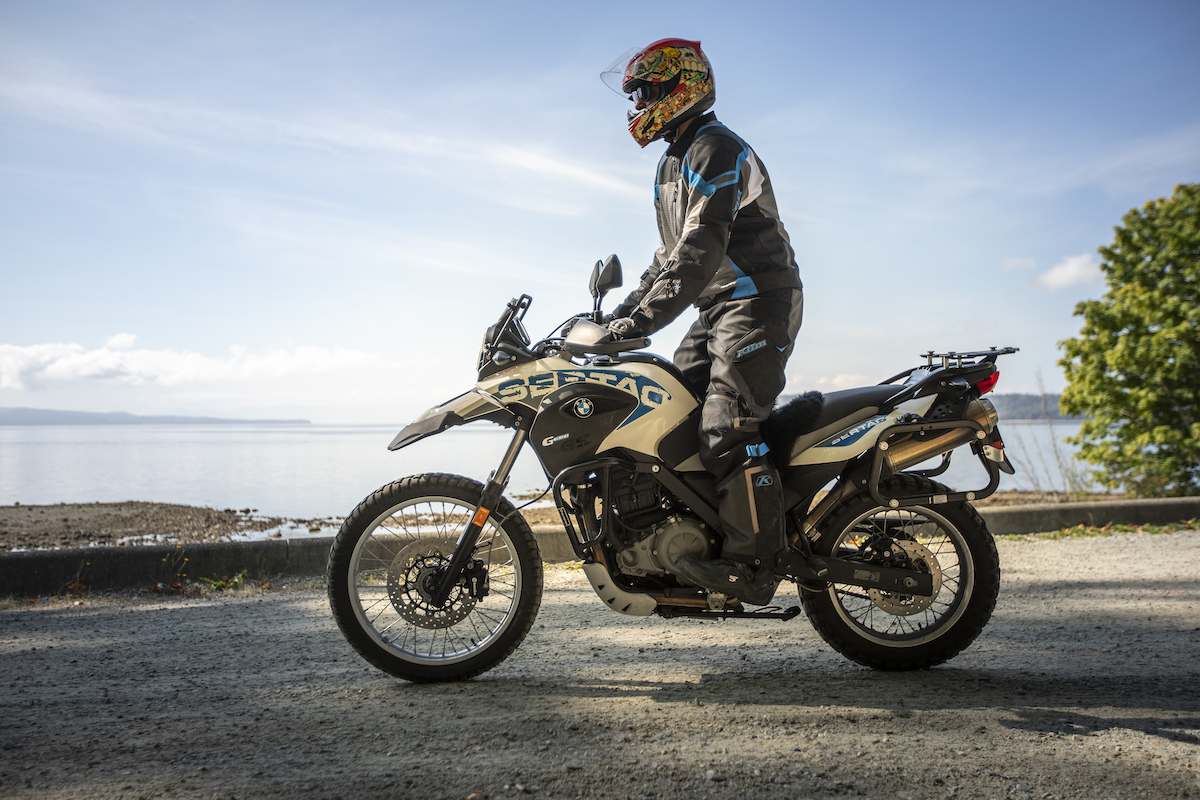

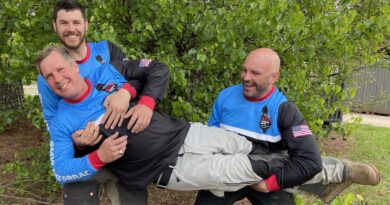
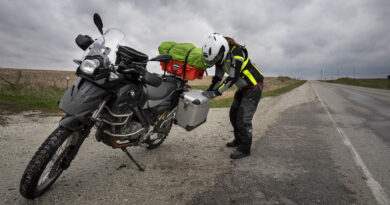

This sounds like a great adventure in the making! Good luck and I will follow your trip with interest. Regards Brian
Thanks Brian! Glad to have you along. It should be a blast. The second story has been posted now as well.